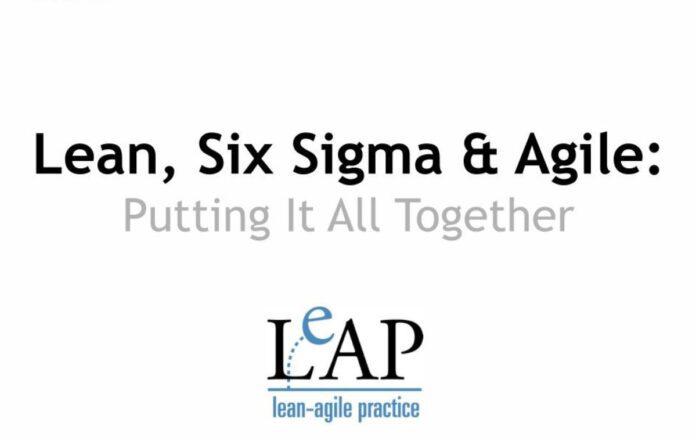Before we can discuss lean manufacturing, it is imperative to first establish what lean is. At its core, lean is a thought process and business principle that focuses on getting the maximum possible output from the least possible input. It is true that some core philosophies of lean are so old that they go at least as far back as the 1400s. However, lean in a structured form was first introduced to modern manufacturing in 1913 by the business magnets and pioneering automotive entrepreneur, Henry Ford.
Despite the potential in Ford’s “flow production” process, it was not successful in the long run because his process did not account for flexibility, customer opinion, and evolution. That changed after Kiichiro Toyoda and Taiichi Ohno improved their ideas and came up with what they called the “Toyota Production System (TPS).” Ever since then, the original TPS have been revised by Toyota numerous times to keep all their manufacturing processes up to date, but here’s the best part; even that modification process was very much an essential step in TPS from the first day.
What are the Five Core Principles of Lean?
Lean manufacturing is built on the five core principles of lean. You can check them out next for quick reference:
- Value: Identifying, establishing, and defining value.
- Value Streams: Identifying, mapping, and prioritizing the streams of value.
- Workflow Establishment: Creating smooth workflow by decreasing and removing as many unnecessary steps, gaps, and bottlenecks as possible.
- The Pull System: Production of only what and how much is needed in direct proportion to customer demand/order.
- Continuous Improvement: Brainstorming and simulating possible, better alternatives to the established lean process.
What is Lean Manufacturing?
When the five core principles of lean are successfully incorporated into all facets of production by a manufacturer, the resulting process can be called a lean manufacturing method. Since both Ford and Toyota were automotive manufacturers, we find those lean manufacturing methods are ideally suited for vehicle manufacturers in general. However, lean manufacturing principles are by no means limited in their application to the automotive manufacturing industry alone.
Any manufacturing process can be improved by implementing the principles of lean. In fact, lean is not limited to just the manufacturing industry either. For example, software development teams often utilize lean to maximize their productivity while working on a time-sensitive, important project. They rely more on Agile systems than Six Sigma, but they both originate from the core principles of lean.
What is Six Sigma?
Brought forth by Bill Smith in 1980, Six Sigma is a statistically backed, quantitative adaptation and expansion of various lean principles. It was used first by Smith’s employer Motorola with resounding success. It should be noted that Six Sigma was the first adaptation of lean that focused so much on statistics, mathematics, and data analysis.
Six Sigma can be defined as a set of data-driven, statistically sound steps, which are interconnected and geared towards bringing about business process improvement and high-quality control standards. The methodology aims to achieve this by:
- Finding problems and the origin of those problems.
- Finding ways to fix those problems by removing the root cause.
- Finetuning the processes accordingly to rectify the problems and accommodate necessary changes.
- Implementing the modified process with repeatability and accuracy as primary goals.
- Improving product turnaround time through the elimination of unnecessary steps.
- Decreasing the distance between revenue and profit.
What are the Two Core Methodologies of Six Sigma?
Six Sigma can be divided into two primary methodologies, which are:
- DMAIC: Define, Measure, Analyze, Improve, and Control.
- DMADV: Define, Measure, Analyze, Design, Verify.
While there are several adaptations of the Six Sigma principles which add more components to the original two, these are the original and most relevant versions of Motorola’s winning strategy even today.
DMAIC
As the abbreviations detailed above suggest, the DMAIC method is divided into five main steps. These would be:
Step 1: Define the problem, the target customers, and the critical process outputs (VOC + CTQ).
Step 2: Measure the problem in quantifiable specifications and establish baselines for process performance metrics. Data collection is the goal here.
Step 3: Analyze the data to determine each problem’s original causes. Once the analysis is successful in determining all determinable problems from the data analysis, create a hierarchal list of those causes in descending order of importance. Next, it is time to analyze and statistically display how those causes each affect the present process and contribute to creating the problem(s).
Step 4: Improve the present process by implementing solutions. This is done by identifying possible solutions to each root cause first, and then testing/simulating those solutions to measure success rates. After the best possible solutions have been statistically established as such, it is time to improve the process by implementing those solutions with immediate effect.
Step 5: Control future sustainability of implemented solutions by stabilizing them first. Next, it is time to consider several other future-oriented plans such as incremental solutions to prevent potential future problems.
DMADV
DMADV is also called DFSS, but the phrase Design for Six Sigma is not as indicative of the underlying lean framework as DMADV. Let’s take a look at the five steps next:
Step 1: Define goals with quantifiable, realistic specifications. The idea behind this step is that of identifying the project’s purpose with perfect clarity.
Step 2: Measure the most relevant CTQs such as requirements, target markets, critical design parameters, design component scores, production capability assessment, critical risk assessment, etc.
Step 3: Analyze the gathered data from the CTQs to develop alternative designs within identified constraints. Analyze further to determine the most optimal alternative design.
Step 4: Design the optimal alternative design determined in Step 3.
Step 5: Verify the applicability, acceptability, and practicality of the optimal alternative design in real-world scenarios in that it is meant to be used. Multiparty discussions with experts and investors are a common part of this final step, before deployment.
The core steps must be modified and adapted to best suit the project’s needs of course, which requires a deeper academic understanding of the applicative statistical methods and tools used to implement the Six Sigma methodology. Just knowing the steps alone is not enough to develop a functional strategy, which can then be applied and integrated successfully to achieve better results. If you wish to learn how Six Sigma methods are integrated into real-world manufacturing, apply for this online Masters in Lean Manufacturing course that was co-developed by General Motors.
What is Agile?
Agile can be defined as an incremental method used to primarily optimize software development and SaaS processes from the server end.
It came into existence as the Manifesto for Agile Software Development in 2001, citing key values such as:
- Reliance on talent and human interactions, rather than business processes and software.
- Delivering active, ready-to-use applications, rather than focusing on documentation.
- Prefer collaborative customer relationships rather than focusing on contracts, terms, policies, and negotiations.
- Adaptive problem-solving in response to changing scenarios, rather than blindly following a rigid, inadequate plan.
It should be noted that the Agile manifesto does not undermine the importance of software, documentation, contracts, or even a project plan in any way. However, it draws the IT industry’s focus toward this idea that software development SaaS deployment must be adaptive, or “agile” enough to accommodate changes as necessary to meet the long-term goals of the company.
What are the 12 Principles of Agile?
In total, twelve principles were identified and categorized as part of the Agile Manifesto. These are:
- Satisfy customers through constant and speedy delivery of working software that’s relevant to the market demand.
- Work with the presumption of change and the agility necessary to make changes at the last minute.
- Deliver application features to the customer as fast as possible in incremental, frequent updates on a weekly/monthly basis.
- Business and development teams must work in collaboration and synchronization with each other on a regular basis.
- Focus on creating a supportive environment for dedicated employees, and place trust in them.
- Build a team of developers who can interact with each other in free communication.
- If the application works better than it did yesterday, progress is being made.
- Sustainable development is to be planned for and achieved by creating a collaborative environment among investors, developers, and clients.
- Constant vigilance towards maintaining good coding practices and resource reallocation needs is important to be truly agile.
- Maximize output while minimizing work input by eliminating unnecessary complications.
- Prioritize team decisions over a team lead’s decisions as that is how the greatest software designs and architectures have always been developed.
- An Agile development team frequently reflects on how to improve their productive output and then takes all necessary steps to make themselves more productive as a team.
Six Sigma Vs. Agile: Are They Comparable?
Agile and Six Sigma have a few similarities between them but there are too many differences, especially in relation to applicability scenarios. While Six Sigma methods are widely recognized and adopted across multiple sectors in both manufacturing and management, Agile is best suited for software development and SaaS delivery.
In other words, Agile and Six Sigma are both excellent adaptations and expansions of certain lean principles, but they are not comparable. As we have already seen, the 12 principles of the Agile Manifesto are exclusively and intricately linked to IT. It is difficult to imagine that those principles can be applied to their full effect in any scenario other than in the IT development service.
Six Sigma and Agile Can Coexist
If we were to take a different approach and see the two as coexisting and collaborative processes, then it would make more sense. Neither of the two methodologies for business process improvement was designed to be competing in any way. There is no clash of ideologies here because they both originate at least to some extent from preexisting lean ideologies in business.
One may argue that Six Sigma focuses on rigid standardization methods far too much for it to coexist with Agile, which is a design in evolutionary development practices. However, that is a misconception for the most part. If we look back at the DMAIC approach, which was defined and elaborated on earlier in this post, we can easily note that Control or Step 5 points towards future planning that allows for the implementation of incremental solutions and thus, the evolution of the process developed and standardized.
The best example that clearly demonstrates Agile and Six Sigma can coexist is Kanban. Kanban here refers to both the original lean manufacturing technique introduced as an addition to the lean Toyota Production System way back in 1953, as well as the modern adaptation of Kanban as a software development optimization tool.
If you read more about Kanban, you will learn that Kanban in its most modern formats has adopted several elements from both Six Sigma methods and the Agile Manifesto quite effectively. Just look at some of the highlight principles of a modern Kanban methodology to get a better understanding of how the best of both principles have been incorporated very intelligently here.
- Map the present workflow on a Kanban system for visualization.
- Improve collaboration with the help of a mapped, cloud-synced workflow system that updates in real-time.
- Identify the bottlenecks/holdups.
- Make small changes to clear up the clogs.
- Do not make sudden, overwhelming changes that undermine the individual.
- Merge the present process with incremental changes to improve production efficiency, rather than completely replacing it.
- Remove unnecessary steps to increase output without increasing input and to also speed up the process.
- Define each necessary change and step clearly.
- Provide data-backed reasons for making the defined changes.
Ford modernized and introduced the idea of lean, while Toyota turned it into a strategy that has not let them down yet. Since that time, several experts have come forward with their own iterations and adaptations of the lean manufacturing process. We looked at some of them here to provide an introductory but insightful understanding of what lean is and how it provides the basis for two of the most successful business process improvement methods.


















![10 Countries With the Best Healthcare in the World [Statistical Analysis] Countries With the Best Healthcare in the World](https://articleify.com/wp-content/uploads/2025/07/Countries-With-the-Best-Healthcare-in-the-World-1-150x150.jpg)










